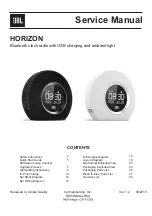
3.1 Selecting a location
Warning: Potential ignition source
This product is NOT approved for use in hazardous/flammable atmospheres. Do
NOT install in a hazardous/flammable atmosphere (such as in an engine room
or near fuel tanks).
General location requirements
When selecting a location for the unit it is important to consider a number of factors.
Ventilation requirements
To provide adequate airflow:
• Ensure that equipment is mounted in a compartment of suitable size.
• Ensure that ventilation holes are not obstructed.
• Ensure adequate separation of equipment.
Mounting surface requirements
When selecting a mounting surface ensure:
• the product will be adequately supported on a secure, flat surface. Do NOT mount units or cut
holes in places which may damage the structure of the vessel.
• sufficient space is available around the product.
• there is nothing behind the mounting surface that may be damaged when drilling.
Cable routing requirements
Ensure you have identified the route that all required cables will take and that sufficient space is
available to allow connection of cables:
• Unless otherwise stated, a minimum cable bend radius of 100 mm (3.94 in) is required.
• Where necessary, cable supports should be used to prevent stress on connectors.
Electrical interference
Select a location that is far enough away from devices that may cause interference, such as motors,
generators and radio transmitters/receivers.
Power supply
Select a location that is as close as possible to the vessel’s DC power supply. This will help to
keep cable runs to a minimum.
RF interference
Certain third-party external electrical equipment can cause Radio Frequency (RF) interference with
GNSS (GPS), AIS or VHF devices, if the external equipment is not adequately insulated and emits
excessive levels of electromagnetic interference (EMI).
Some common examples of such external equipment include LED spot or strip lights, and terrestrial
TV tuners.
To minimize interference from such equipment:
• Keep it as far away from GNSS (GPS), AIS or VHF devices as possible.
• Ensure that any power cables for external equipment are not entangled with the power or data
cables for these devices.
• Consider fitting one or more high frequency suppression ferrites to the EMI-emitting device. The
ferrite(s) should be rated to be effective in the range 100 MHz to 2.5 GHz, and should be fitted
to the power cable and any other cables exiting the EMI-emitting device, as close as possible to
the position where the cable exits the device.
Compass safe distance
When choosing a suitable location for your product you should aim to maintain the maximum possible
distance between the product and any installed compass. This distance should be at least 1 m (3 ft) in
all directions. For smaller vessels it may not be possible to achieve this distance. In this situation
ensure that the compass is not affected by the product when it is powered on.
28
Summary of Contents for Ray 90
Page 2: ......
Page 4: ......
Page 44: ...44...
Page 92: ...92...
Page 127: ...Menu Description Options Flybridge Mast Group 1 to Group 5 VHF operations 127...
Page 128: ...128...
Page 134: ...134...
Page 135: ...Chapter 10 Maintenance Chapter contents 10 1 Maintenance on page 136 Maintenance 135...
Page 152: ...152...
Page 164: ...164...
Page 190: ......
Page 191: ......
















































